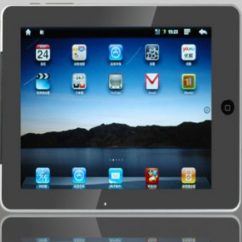Articles and News
STUDY: HOW TO USE MEDIA TO BE A MUST-HAVE BRAND April 20, 2011 (0 comments)

Merrick, NY—What’s the best way to cut through ad clutter and become a ‘must have’ for consumers?
A recent Executive Insights report from L.E.K. Consulting highlighted findings from its third annual Hidden Opportunities in New Media survey, providing insights into changing consumer preferences across both new and traditional media. The company interviewed 2,000 American consumers to measure changes in media consumption. It spotlights opportunities such as tablet computers and also illustrates why television and select other media will stay strong.
Four key findings include:
- Digital media consumption figures are surging for tablet owners but declining for non-tablet owners. The study says it’s because tablet owners prefer the e-reader both for viewing traditional print media, and the perceived (though not always actual) lower cost for the e-version of the content. Tablet owners also have driven increased consumption of traditional printed media, though not to the level of the digital versions.
- Reports of pay-TV’s demise are premature—L.E.K. findings do not predict cable television fading away—but consumers are trimming back their cable services and augmenting with low-cost or free services such as Netflix, YouTube, Hulu, and more. That being said, however, subscription-based services in general, especially a flat-rate “all you can eat” model, seem to be preferred during lean economic times over transaction-based media such as in-theatre movies or pay-per-view events.
- Not surprisingly, the popularity of social networks is exploding. 44% of respondents use social networking sites every day; 27% log on several times a day. 57% of respondents who visit several times a day “like” at least five brands.
- Tablet and social networking users are the advertising sweet spot. Prudent brands and retailers have the opportunity to feed their appetite for media with targeted offers, while consumers who are highly engaged in social networks are both influenced by relevant advertising and can be vocal in evangelizing (or criticizing) companies and their products. Successfully reaching these targets can increase the ROI of a marketing budget.
.png)







